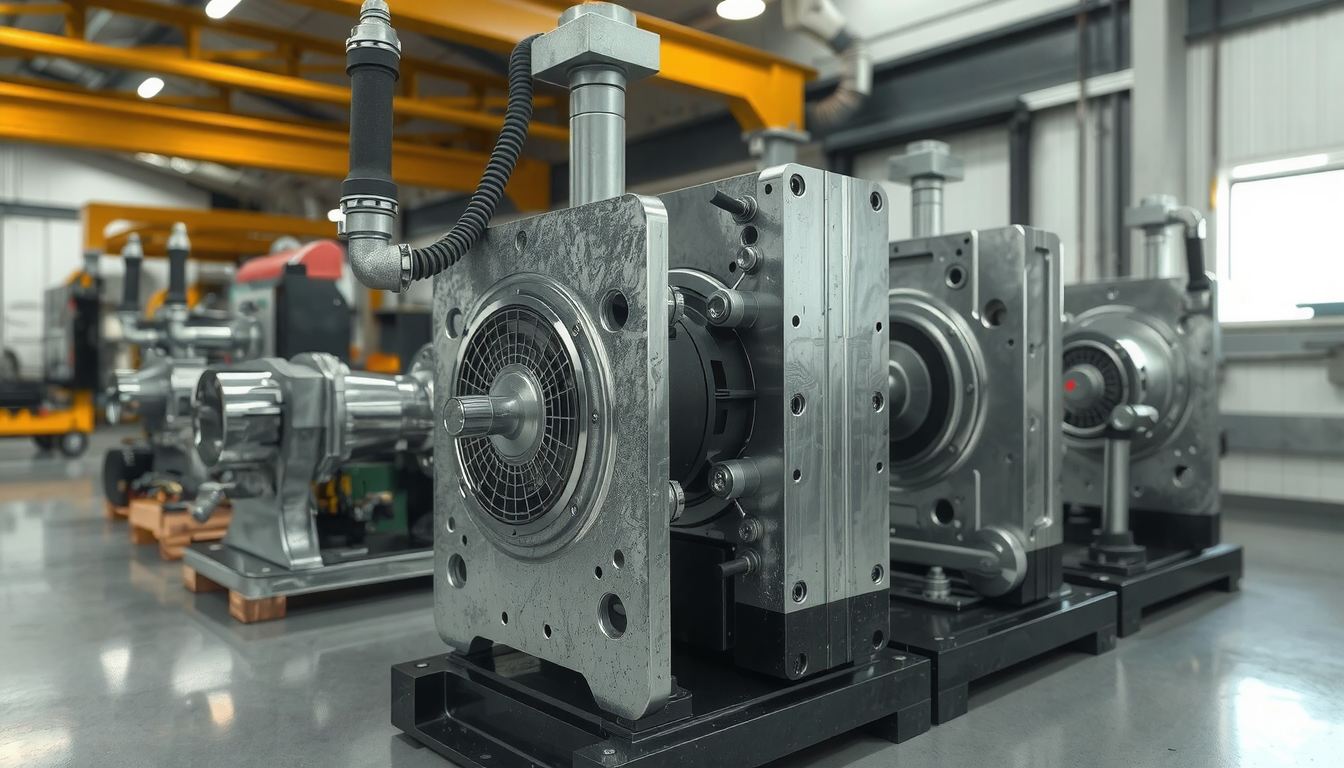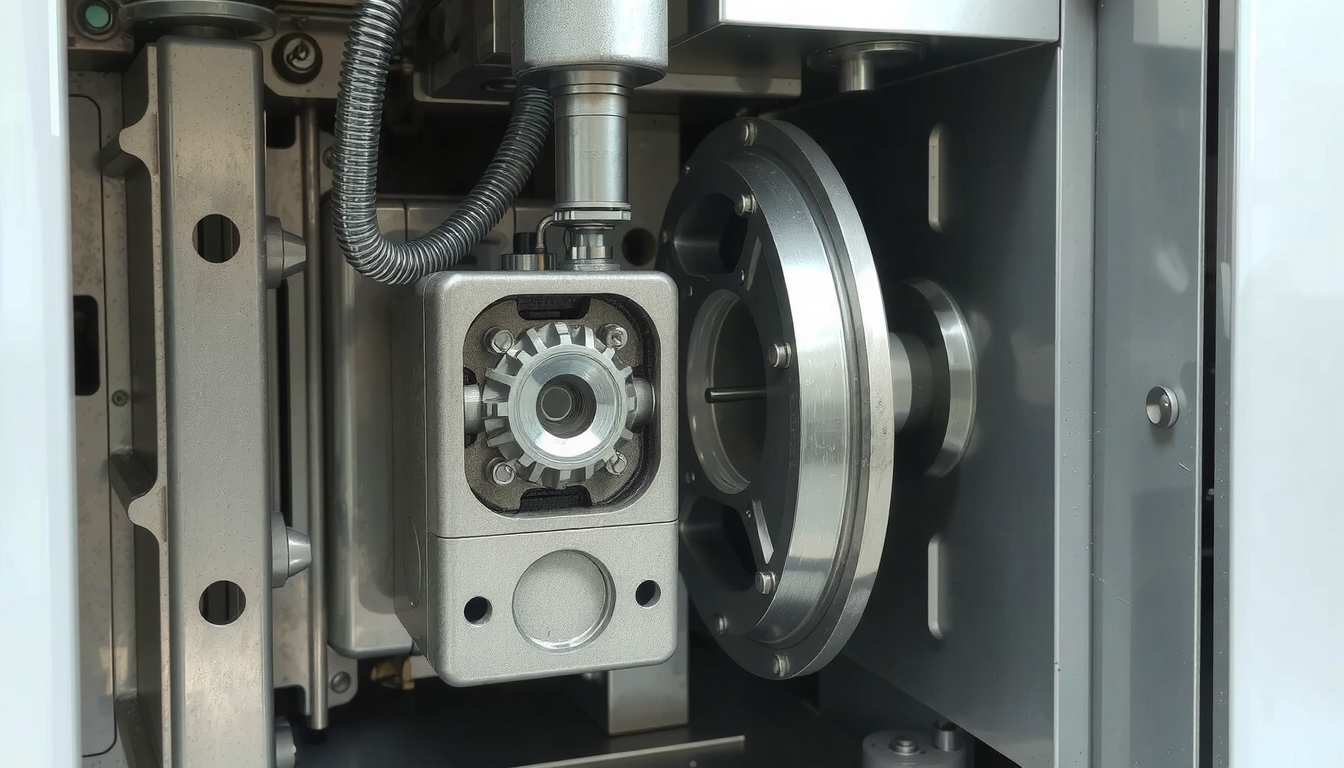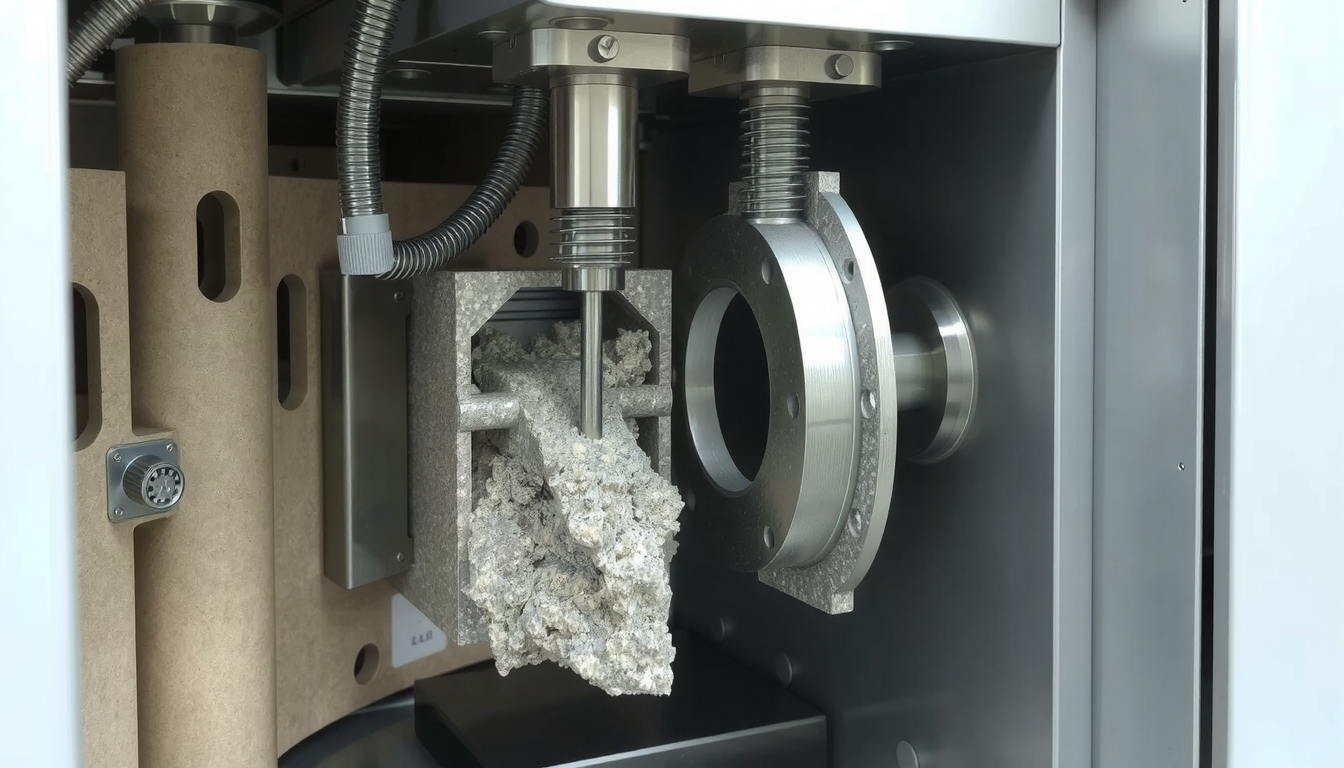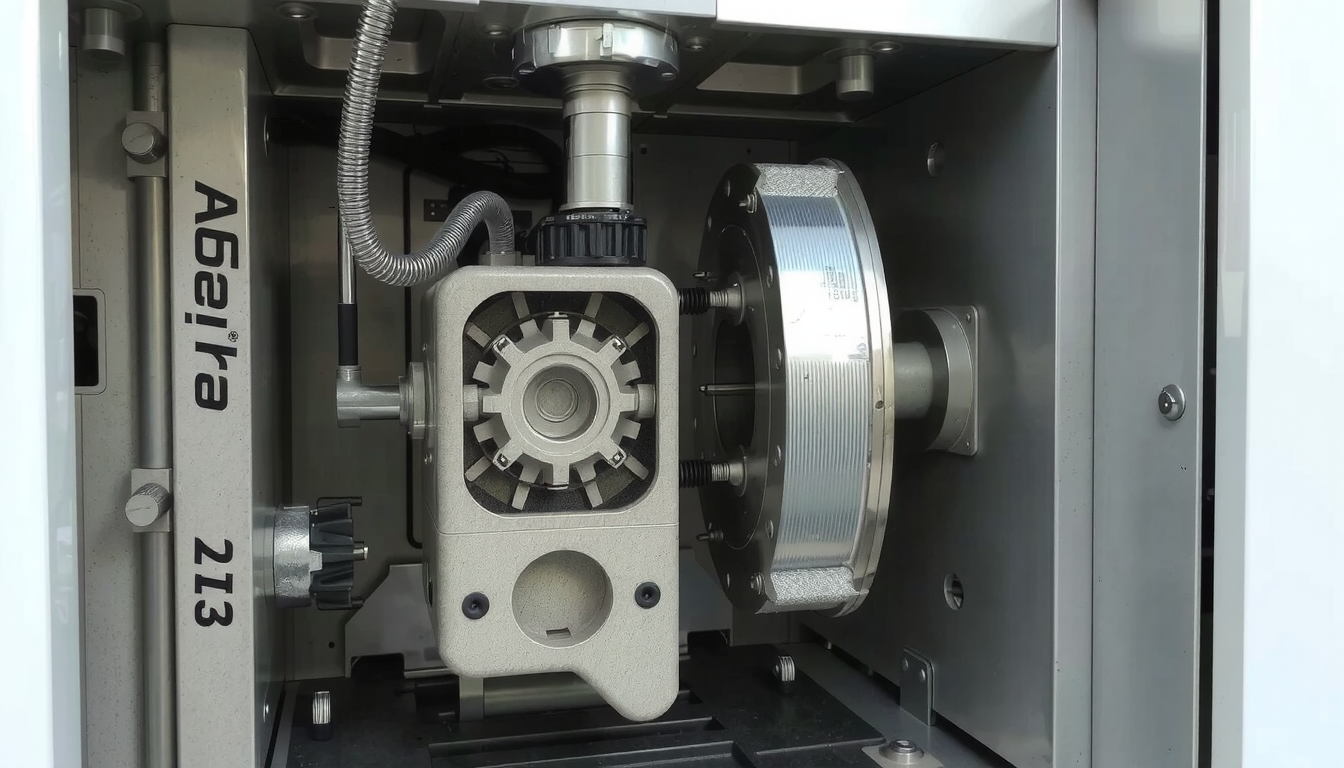H2: Introduction: The Core of Modern Manufacturing

Okay. So, what is plastic injection molding? It is one of the fast ways to manufacture different parts that you want with plastic.
It is just like a much more sophisticated Jell-O mold. Instead of gelatin, you inject hot, liquid plastic into a custom metal mold. The plastic cools and hardens. Then it comes out as a perfect, solid part.
Just take a look around you. Your phone case is one of the items made this way. Same as the caps on water bottles. Car dashboards and a variety of toys use this method too. It’s what makes ordinary mass-production possible.
You will find all that you need in this guide. You will learn its operational principle. You will find out what the price is. You will learn when is the best time for your project.
H3: Plastic Injection Molding: A Quick Overview
Molding plastic injection makes a huge amount of parts quickly. The process involves the injection of melted plastic into a customized mold and the creation of identical parts through this mechanism. It is among the essential methods of modern mass production.
It is the premier plastics processing method. That is a fact that the data from the industry reveals. The Plastics Injection Molding: Definition, Benefits and Applications article states that this process is in charge of processing a big share of all plastics work on a global level. Therefore, it played a significant role in the manufacturing of items that we use every day.
H3: Who is This Guide For?
This guide is made for product designers and engineers. It is for business people and students. It is for anybody new to manufacturing who wants a simple explanation.
We at Mékalite are high-quality manufacturing experts. This guide is our contribution to making everything clear. Our goal is to assist you in making your ideas into real products.
H2: The Plastic Injection Molding Process: From Pellet to Part
The plastic injection molding process seems complicated. But it can be broken down into four simple steps that are repeated over and over again. The cycle creates thousands or even millions of identical parts in no time. A diagram would show a circular route for these steps.
Grasping this cycle is a significant catalyst for understanding what is plastic injection molding.
H3: Step 1: Clamping
Initially, the machine prepares the mold. A mold is made of two separate parts. The clamping unit is a huge press. It applies super strong force to bring these two parts together.
This force must be strong enough to keep the mold tightly shut. Material is escapable from the closed injection area if mold is not tight enough during the injection cycle.
H3: Step 2: Injection
After that, a few small plastic pellets enter a heated barrel from the hopper. A big rotatable screw inside the barrel makes the pellets liquid by melting them.

The screw moves forward just like a plunger. This puts the molten plastic in the space of the closed mold. This is executed pretty quickly through high pressure.
H3: Step 3: Cooling
As soon as the molten plastic fills the mold, cooling starts. The plastic material inside will melt the heat to the metal mold surrounding it.
While the plastic cools, it starts to harden and acquire the very shape of the mold. The time that is needed for cooling depends on the type of plastic and the thickness of the part.
H3: Step 4: Ejection
The clamping unit first opens after the part has cooled down and become solid. This is what separates the two mold parts. Little rods that are called ejector pins push the part that is finished out.
The part drops into a collection bin. The machine is set and ready to go for another round. This whole cycle can take from seconds to minutes, as per The outline of injection molding.
H2: The Machine and the Mold: The Anatomy of the Process
You cannot grasp what is plastic injection molding without knowing the two primary components. These are the machine and the mold. The machine is the source of power. The mold is the source of accuracy.
H3: The Injection Molding Machine
The machine is composed of two main parts.
The Injection Unit is responsible for plastic melting and injection. It is made up of the hopper, the heated barrel, and the screw.
The Clamping Unit is the mold holder It opens and closes the mold. Comes also included ejecting the part that is finished. The rating of clamping force in tons is the key metric of the machines.
H3: A Deeper Look at the Mold
The mold is also what we may call a Tool or Die. It is the real beating heart of the whole operation. It is a custom-designed block made from steel or aluminum that is filled with the cavity of a part that you want to make. The precision of the mold will define the quality of the finished part.
A mold has many essential components that comprise it:
- Les Cavity is the empty area that is part of the mold. It shapes the outside surfaces of the plastic part. It is the “female” half of the mold.
- Les Core is the raised area that fits into the cavity. It shapes the inside surfaces of the plastic part. It is the “male” half.
- Les Runner System & Gate are channels cut into the mold. They lead molten plastic from the machine’s nozzle into the cavity. The gate is the spot where the plastic enters the cavity.
- Les Ejector Pins are small metal pieces. They help in the ejection of the finished part from the mold after the mold opens.
Crafting these intricate gadgets is a special kind of work which is referred to as fabrication de moules par injection.

H2: Materials of Choice: What Plastics Can Be Used?
Another plus for plastic injection molding is the wide range of materials on offer. Designers have the freedom to select the most suitable plastic. Accordingly, they can choose property combinations that are desired for their product. Such choices affect factors like: strength, flexibility, color, and cost.
H3: Thermoplastics vs. Thermosets
Plastics that are typically used in injection molding can be classified into two primary types.
The first and the most common type are Thermoplastics. These are indeed very much like butter. They can be melted, solidified again, and remelted after that. Therefore, they can be recycled.
The other category is Thermosets they have a unique feature. When they are heated, they undergo a permanent change. That is akin to baking a cake. After they duly set, they cannot go through the melting and remelting process.
H3: Common Thermoplastics and Their Uses
A substantial number of projects utilize thermoplastics because of their adaptability. Thus they are the most commonly used materials in plastic injection molding.
| Matériau | Propriétés principales | Applications courantes |
|---|---|---|
| ABS | Strong, impact-resistant, good surface finish | LEGO bricks, keyboard caps, electronic housings |
| Polypropylène (PP) | Flexible, chemical-resistant, inexpensive | Food containers, car bumpers, living hinges |
| Polycarbonate (PC) | Very strong, transparent, impact/heat resistant | Eyeglass lenses, safety shields, water bottles |
| Nylon (PA) | High strength, good wear resistance | Gears, bearings, zip ties, textiles |
H2: Advantages vs. Disadvantages of Plastic Injection Molding
Like any production method, plastic injection molding comes with its upsides and downsides. Knowing these pros and cons is a must for determining if the process aligns with your production requirements. The impartial perspective is necessary for whoever is querying “what is plastic injection molding” from the business angle.
H3: The Advantages
- High Efficiency and Speed: The machine once deployed can put out a lot of parts in very little time. The time to cycle through is often in the second range.
- Low Cost per Unit: The investment at the beginning is high. But if the production is in high volume, each part becomes very affordable.
- High Consistency and Repeatability: The process produces close to identical parts. So this assures good quality throughout the production run.
- Intricate Design: Allows a lot of very intricate signage details and details which are difficult or impossible with the alternative methods.
- Massive Material Selection: A tremendous assortment of polymers, additives, and colors exist. They are the solution to particular product requirements.
H3: The Disadvantages
- High Initial Tooling Cost: The major thinking point is investment up front to create templates and molds for the first series. For instance, a steel mold of good quality can be costly.
- Very Long Lead Times: The period in which one designs, creates, and tests a production mold is significant. This is usually many weeks or even months.
- Difficult to Modify: It is hard and expensive to make changes in a part design after the mold has been completed. It usually involves remachining or creating a brand new mold.
- Not Suitable for Low Volumes: The tooling cost is very high, therefore, the process is not economical for just a few hundred parts or for prototyping.
H2: When to Choose Injection Molding: A Decision Framework
Choosing to use plastic injection molding is a very significant business decision, not always the best choice. Especially, with newly introduced small companies. Making a choice requires a consideration of main factors.
H3: Key Factors to Consider

Before you make any decision, ask yourself these questions first:
- Production Volume: Is this a prototype run (1-100) parts or a small batch (100-10,000) or mass production (10,000+ parts)?
- Part Complexity: Does your part have a complex shape, thin walls, or very fine details?
- Material Requirements: Do you require a certain type of plastic with strength, flexibility, or temperature resistance?
- Budget & Timeline: How much cash can you set aside? What is the required time to bring your product to the market?
H3: Injection Molding vs. Other Methods
The gathered information will allow you to weigh injection molding against its main rivals.
- vs. 3D printing: Use 3D printing for small batches or just one-off prototyping, printing being fast and cheap. On the other hand, use injection molding when you need to manufacture a billion parts at the cheaper cost of one part.
- vs. CNC Machining: For the case of low-to-mid volume production of simple parts made of lucid strong materials, China CNC machining services can be a good choice. CNC machines create shapes by carving the materials from a block. Injection molding is the path to go if your main goal is the cheap cost of individual units in mass production.
Notre plastic injection molding services are the best option for that! They help to choose the path from the successful prototype to the broad market.
H2: Conclusion: The Power and Precision of Injection Molding
We have been through the topic: what is plastic injection molding? It is a small, fast, and precise process of making many identical plastic parts. The drying pellets that are ejected from a finished product out of this four-step cycle make the backbone of modern manufacturing.
The high cost of the mold at the beginning can really cast some doubt. On the other hand, the results are unparalleled when scaled. The advantages alone such as low costing per unit, high repeatability, and design flexibility are substantial. This is the process responsible for the buildings, bottles, and car parts.
H2: Frequently Asked Questions (FAQ)
H3: 1. What is the difference between a mold and a die?
In the plastics industry, a “mold” is a hollow form. Molten material is injected into it to take its shape. A “die” is typically used in extrusion processes. Material is pushed à travers the die to create a long, continuous shape. Examples include pipes or window frames.
H3: 2. How long does an injection mold last?
A mold’s lifespan depends on its material and how many parts it makes. A softer aluminum mold is often used for prototyping. It might last for 5,000 to 10,000 cycles. A hardened steel mold built for mass production can last for a million cycles or more. This requires proper maintenance.
H3: 3. What are common defects in plastic injection molding?
As experts, we often troubleshoot defects. Common issues include flash. This is a thin layer of excess plastic that seeps out of the mold. Sink marks are small dips on the surface of thick sections. Short shots happen when the mold doesn’t fill completely. Warp is when the part distorts as it cools. These and other common injection moulding basics are usually fixed by adjusting machine settings or improving mold design.
H3: 4. Can you use recycled plastics in injection molding?
Yes, absolutely. Many thermoplastics can be ground up, re-melted, and used again. This is often done with “regrind.” This is scrap material from the factory itself. It can also be done with post-consumer recycled plastics to make production more sustainable.
H3: 5. How much does an injection mold cost?
The cost of an injection mold varies widely. A small, simple, single-cavity mold made from aluminum might cost a few thousand dollars. A large, complex, multi-cavity mold made from hardened steel for high-volume production can easily cost over $100,000. The part’s complexity, size, and required production volume are the biggest factors.

